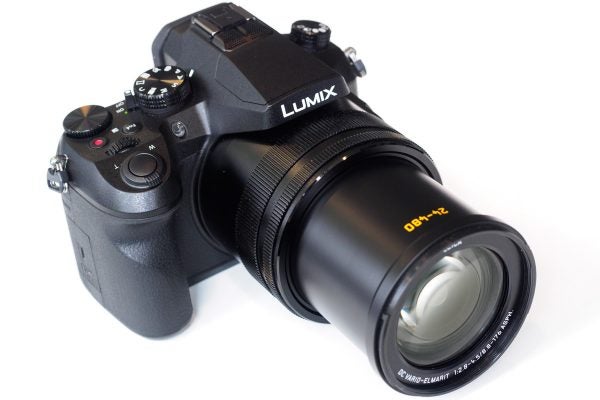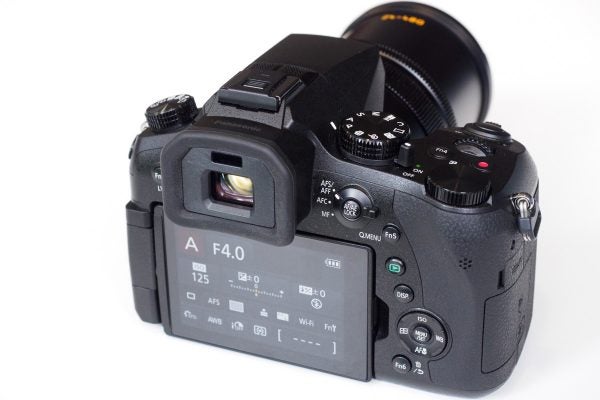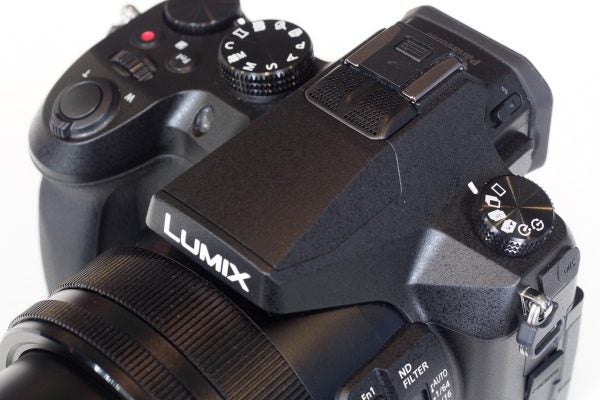A look at the differences between Panasonic’s flagship new bridge camera and its predecessor
Panasonic announced a whole crop of new cameras at Photokina 2016, one of which was the FZ2000, a successor to the popular and well-performing FZ1000. So what’s changed? Here we take a look at some of the key differences, as well as those areas that have stayed the same.
Panasonic FZ2000 vs FZ1000: Sensor
Panasonic appears to have stuck with the same sensor for the FZ2000, as both cameras feature a one-inch High Sensitivity MOS sensor with 20.1 megapixel resolution. It’s not a huge surprise to see this sticking around as it’a already proven itself to be a good performer. A one-inch sensor is a lot larger than the sensors you’ll find in most bridge cameras.

The 24-480mm lens zooms internally and is optimised for video shooting as well as stills
Panasonic FZ2000 vs FZ1000: Lens
Here’s where Panasonic has added a little extra value. The FZ2000 now features a 20x optical zoom, which gives you an equivalent of 24-480mm in 35mm terms. The maximum aperture range goes from f/2.8 up to f/4.5 at the furthest reach of the optic. By contrast, the FZ1000 has a 16x optical zoom, or 25-400mm f/2.8 – 4 in 35mm terms – so the FZ2000 has gone a touch wider too.
In terms of lens construction, the FZ2000’s lens has 16 lenses in 11 groups, while the FZ1000’s has 15 elements in 11 groups, so there may be some improvement in smoothness and bokeh.
Panasonic FZ2000 vs FZ1000: Video
Panasonic was particularly keen to push the video aspect of the FZ2000, describing it as having “video performance never seen before in a bridge camera”. While both the cameras can shoot 4K, the FZ2000 can shoot unlimited 4K and can also be upgraded (paid) to include the V-Log profile, making it especially appealing to videographers.
Panasonic FZ2000 vs FZ1000: Viewfinder
Here’s another element where Panasonic has stuck with a tried and tested device. Both feature a 0.39-inch finder with 2360k-dots and 0.7x magnification. There’s a sensor which automatically detects when the camera has been lifted to your eye for a smooth and seamless transition.

The FZ2000 is an SLR-style bridge camera with impressive video capabilities
Panasonic FZ2000 vs FZ1000: Screen
A couple of reasonably small but significant improvements come to the screen. Both the screens are fully articulated, but we’ve got a bump in resolution from 921k-dots up to 1040k-dots, and the screen is now touch-sensitive, which means you can use it to set autofocus points, move through menus and scroll through images in playback.
Panasonic FZ2000 vs FZ1000: Connectivity
The FZ2000 only has Wi-Fi, whereas the FZ1000 has both Wi-Fi and NFC. Over the past year or so, Panasonic seems to have been quietly dropping NFC from its devices – we can only assume it was a feature that wasn’t been used by many people.
Panasonic FZ2000 vs FZ1000: 4K Photo
While the FZ1000 could shoot 4K and let you create markers in video to extract a still, the FZ2000 brings with it Panasonic’s innovative 4K Photo function. This makes it incredibly easy to extract stills in camera with specific modes designed to capture fast moving action. You can also now enjoy Focus Stacking and Post Focus, features utilise the 4K video shooting to work.

Panasonic’s unique 4K Photo and 4K Post Focus modes are accessed from the drive mode dial
Panasonic FZ2000 vs FZ1000: Design
There’s a lot of similarities between the two cameras when it comes to looks, but the FZ2000 is a little bigger and heavier. It has dimensions of 137.6 x 101.9 x 134.7mm, compared to the 136.8 x 98.5 x 130.7mm dimensions of the FZ1000. The FZ2000 weighs around 966g (including battery and memory card), while the FZ1000 weighs around 831g (also including battery and memory card).
Panasonic FZ2000 vs FZ1000: Price
The FZ2000 is available to pre-order now with a price of £1099, but you can pick up the older version for around £600 – it may be worth snapping up a bargain if you don’t think you’ll need some of the newer features, such as 4K video/photo.





